16 ways to improve your acoustic guitar shows
Everything you need to avoid disasters onstage, from setup checks to anti-feedback measures and the use of in-ear monitoring

Going live with your acoustic guitar? Follow our fully-costed tips to get the most out of your steel-string and make your live performances the best they can be!
1. Set up your guitar (typically from $50/£45)
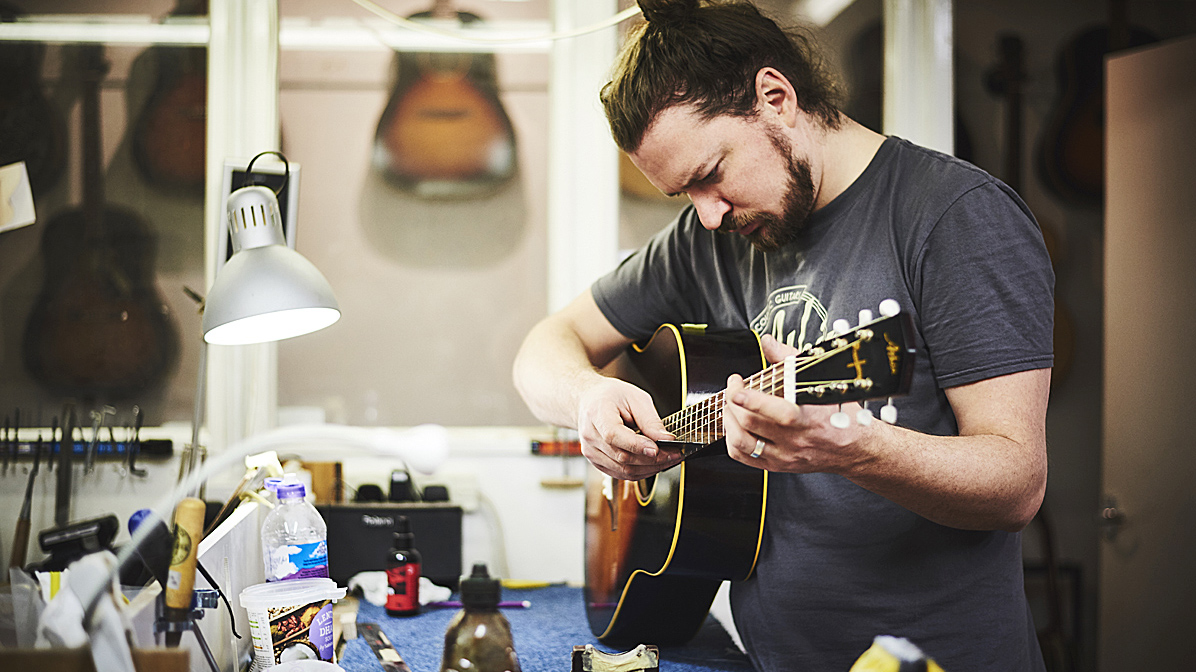
Unlike electric guitars where the sound is mangled and processed through your entire signal chain, the most common objective when amplifying an acoustic guitar is for it to sound like an organic instrument – just louder.
This means there’s no hiding the annoying buzzes, rattles or any other noises that could ruin an otherwise great performance. You can breathe a lease of life into your guitar by getting it set up by a professional luthier or tech, leaving you with a comfortable action, perfect intonation and problem-free playing.
- How to set up your new acoustic guitar: from truss rod adjustment to reading the action
2. Check your electronics regularly (From $/£2)
You know what can kill the intimate storytelling of a delicate acoustic performance? That intermittent burst of ear-splitting noise from the jack socket you “keep meaning to do something about”.
If you don’t want your audience looking back in anger, it pays to keep an eye on your guitar’s electronics. Prices vary, but you can find new jack sockets and pots (potentiometers, i.e., volume knobs) for under a fiver.
Ask a local guitar tech to replace them for you.
3. Set your phase to ‘strum’
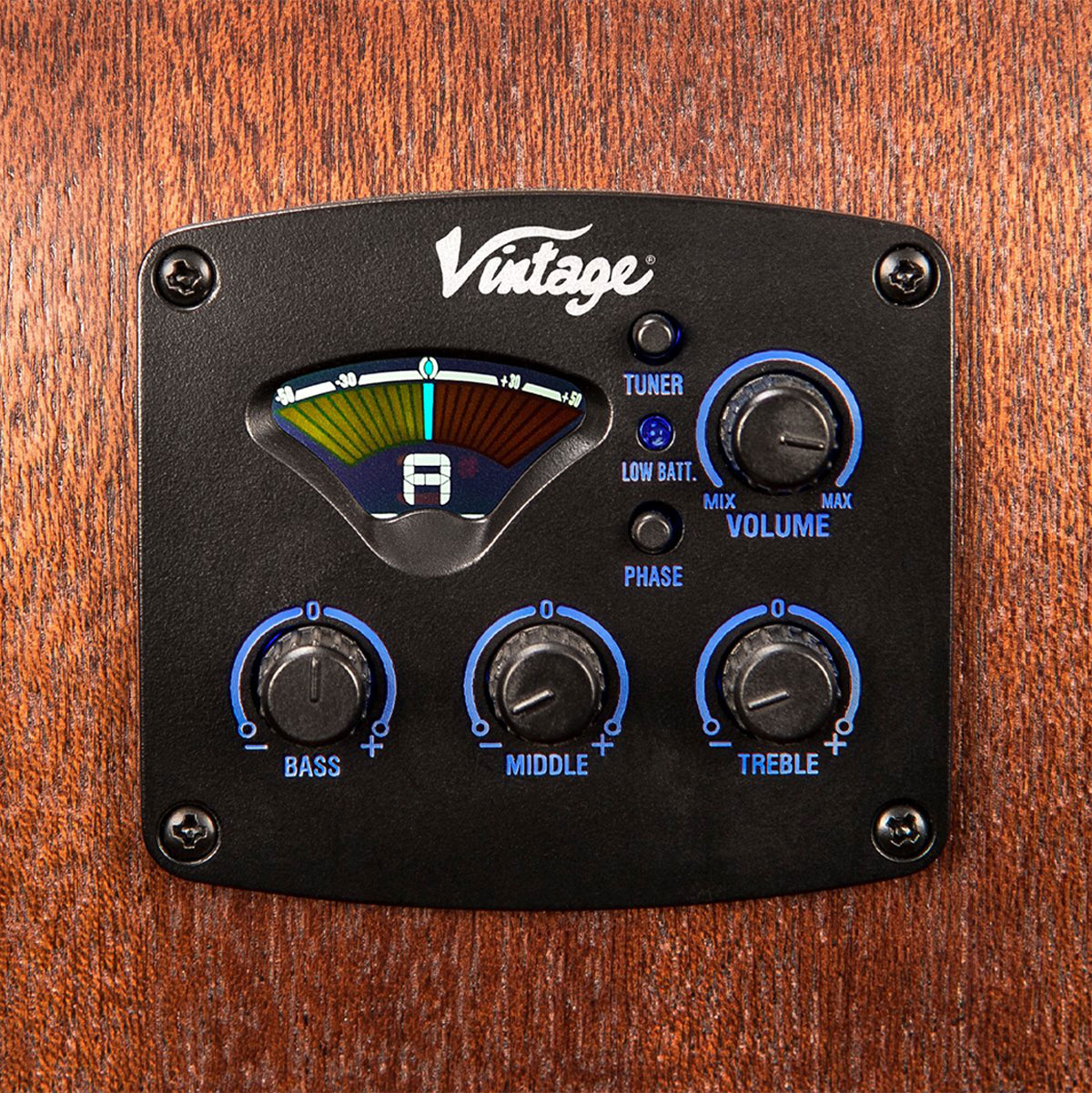
If you’ve ever wondered what the phase switch on your preamp is for, the answer might well be revealed the next time you experience a huge swell of low-end feedback on stage. By flipping the phase of your guitar, you’ll throw it out of alignment with your acoustic guitar amp and (hopefully) help to tame some of that uncontrollable wave.
Get The Pick Newsletter
All the latest guitar news, interviews, lessons, reviews, deals and more, direct to your inbox!
4. Fight feedback further ($/£6.99)
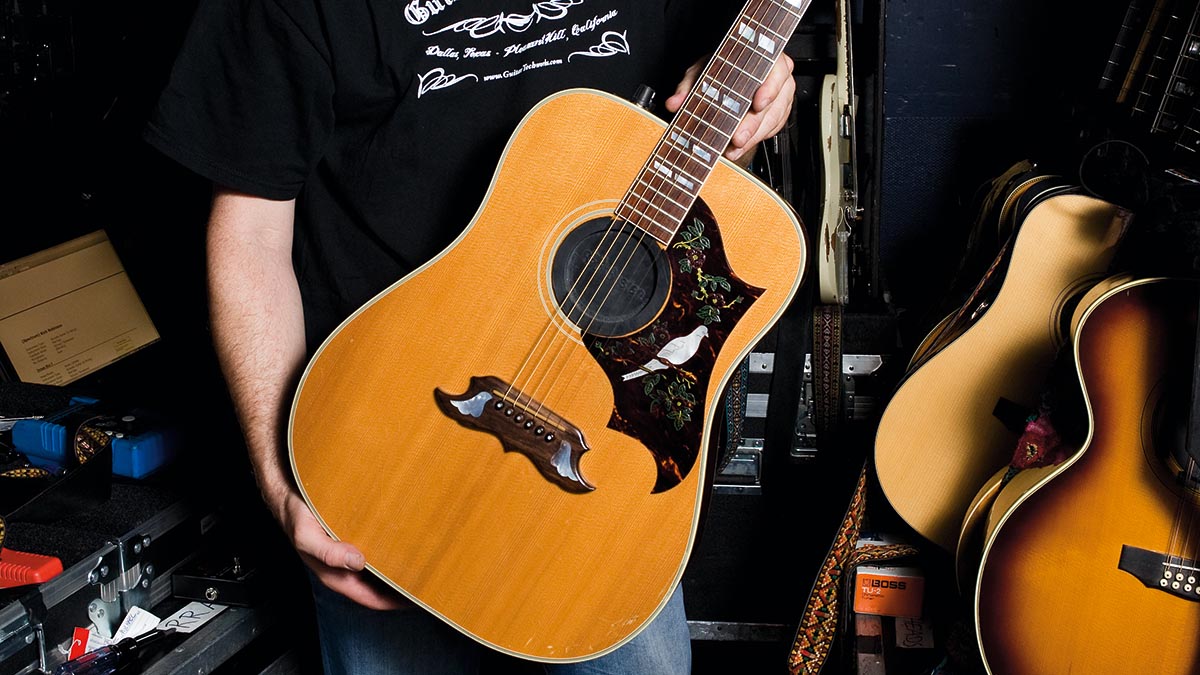
Your acoustic is a big, empty, resonant box of air, which can either sing sweetly or howl horribly if pushed into feedback. You can reduce this risk by literally stuffing the body with absorbent material (fabric) to stop some of the vibrations.
Or, you could try a soundhole cover such as the D’Addario Screeching Halt PW-SH-01, or Martin FBR2. These block off the guitar’s soundhole, breaking the chain of resonance to some degree and ensuring a feedback-free sound on stage.
5. Learn about EQ
Your guitar might have a multi-band EQ on its preamp, which enables you to sculpt your plugged-in sound in greater detail than a simple tone control.
It’s worth setting your rig up as you intend to play it on stage and experiment with different EQ settings to work out what you prefer and what works best.
If you want to get further into the weeds with it, a dedicated EQ pedal or preamp with detailed EQ settings can help you shape your tone, and eliminate feedback.
6. Compress to impress (From $29/£25)
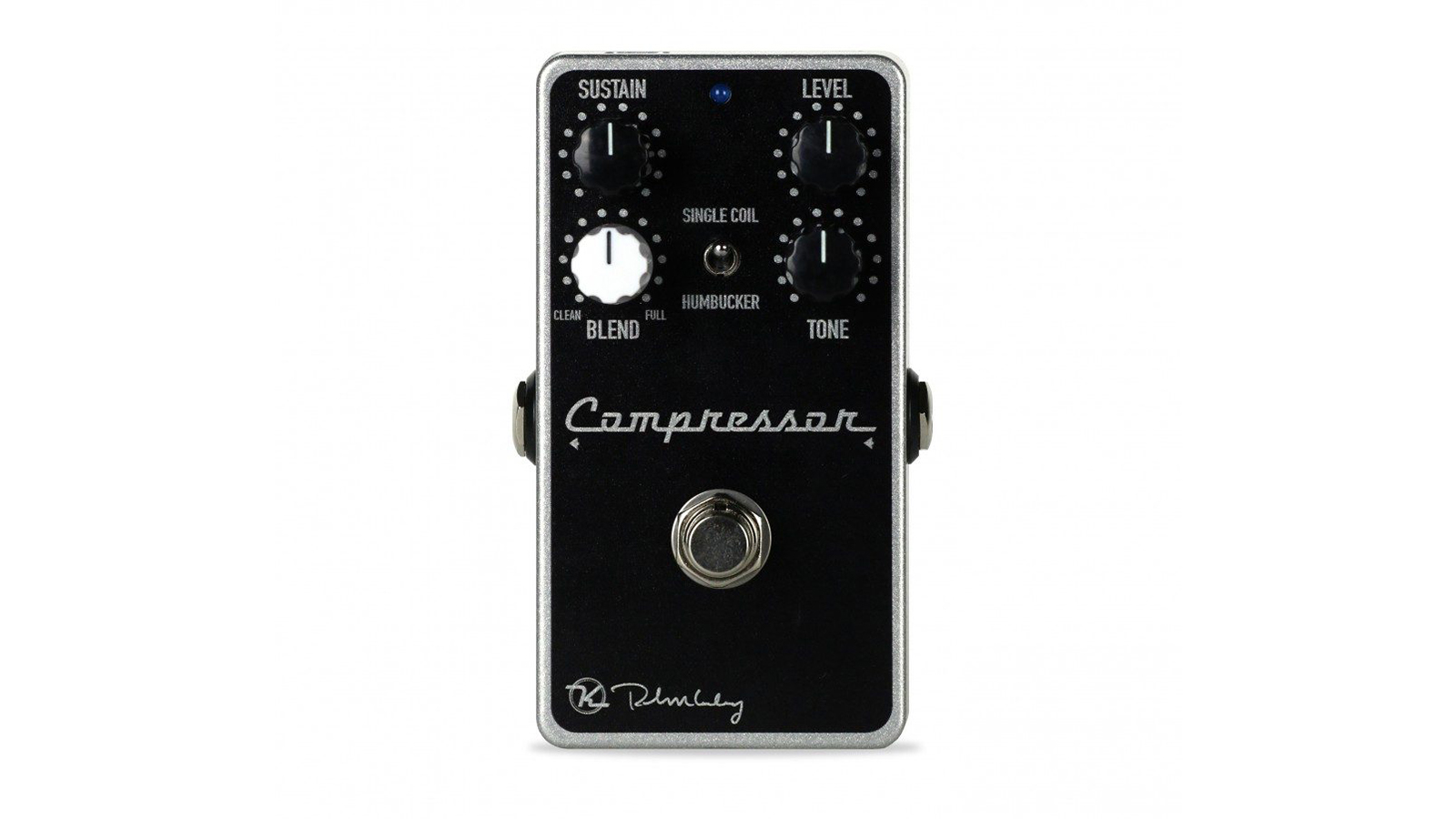
A compressor pedal reduces the dynamic range of the signal that’s plugged into it, and can be a versatile tool for acoustic guitars to help keep things consistent and remove wide fluctuations in dynamics that might cause feedback.
As well as this, compression can emphasise attack, boost sustain and have a big effect on the response and feel of your guitar. It’s great in a full band situation where you want a tight, present acoustic sound that won’t get lost in the mix. Just like EQ, some preamps include compression.
- Best compressor pedals: tame your tone's dynamics with compression
7. Pick up a pickup (from $79/£65)
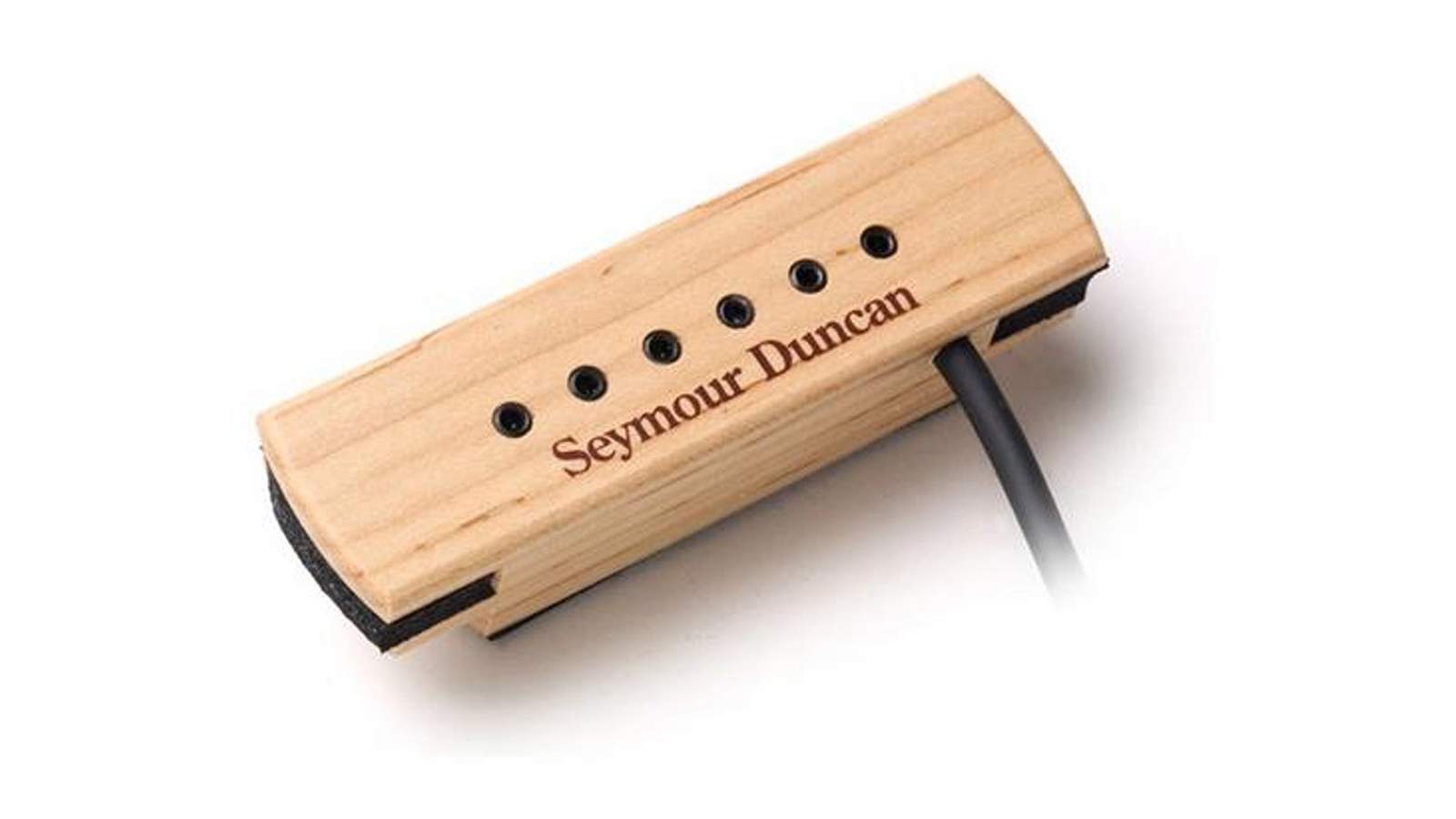
How do you go about gigging if your guitar is totally acoustic, with no onboard preamp or pickup? A retrofit pickup is the solution to this problem and the good news is you can get yourself plugged in without breaking the bank.
LR Baggs and Fishman are the big names in acoustic pickups, or, at $79/£65, Seymour Duncan's passive (no battery required) Woody SA-3 HC magnetic humbucker is a great value unit to try if you want to experiment. It's a breeze to install and remove, with no permanent modifications to your guitar needed.
8. Great sound on stage? It’s in ear! (£/$99)
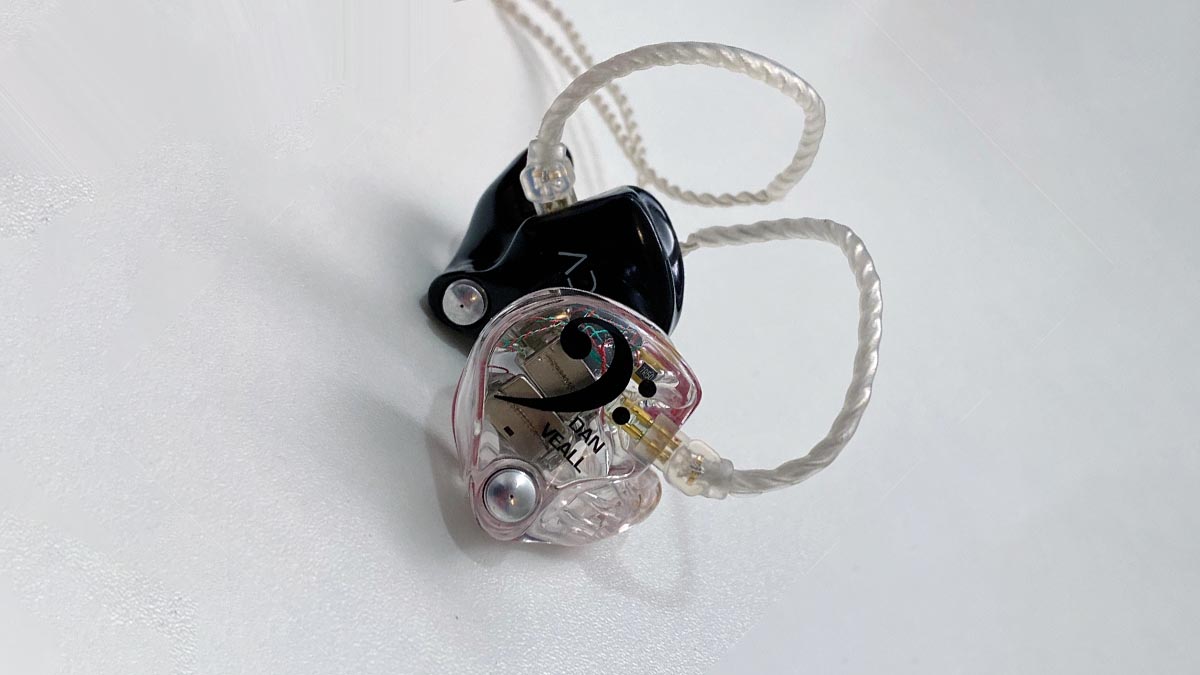
There’s a lot of noise to battle on stage, and if you’re going direct into a PA system with an acoustic guitar then your only hope of hearing it will be through a wedge monitor.
Turn that up and it’s pushing your guitar’s sound directly up and into... you guessed it, your guitar, which as we’ve learned by now is going to cause feedback. In-ear monitors not only give you a much more detailed sonic picture of your guitar, but they help to keep the stage quieter, and they’ll also block out ambient sound, protecting your hearing at the same time!
You don’t have to splurge on custom-moulded or wireless models, but consider some affordable in-ears such as the Shure SE215 if you’re struggling to hear yourself and the rest of the band. It’ll be a revelation.
9. Analyse your playing
Your playing dynamics will have a massive influence over the way your guitar sounds. From the attack of the note to the projection of the guitar, you can control your tone simply by paying attention to the power of your strumming and picking.
The harder you hit the string, the further you’re activating the resonance of the top, back and sides you paid so much attention to when you bought the guitar. The key is knowing how and when to exploit your guitar’s tonal qualities to best suit the playing situation. Which can be aided by our next point.
10. Select your strings
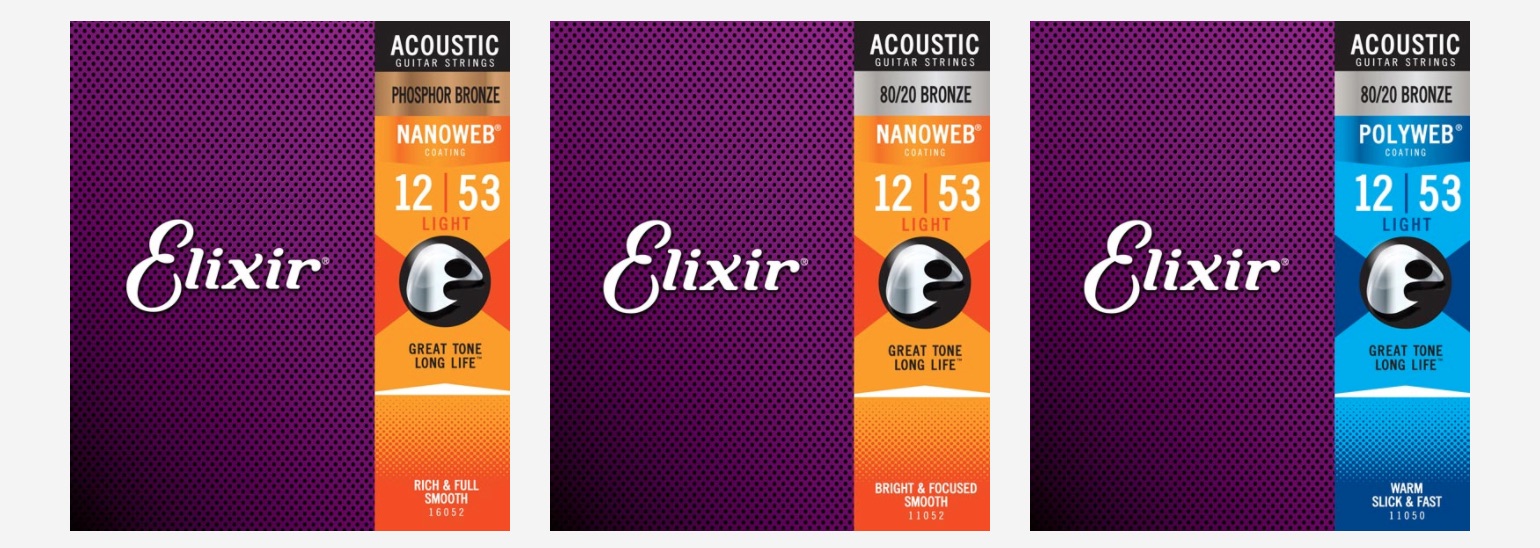
What strings do you play? We’re guessing you’ll answer that question with a brand and preferred gauge. But how much attention do you pay to the metallic make-up of your acoustic strings?
From the bright and mid-scooped sound (albeit at an arguable lifespan cost) of 80/20 bronze, to the warmer response of phosphor bronze, to the reduced finger noise of flatwounds, there’s a lot of tonal variation to be had from your strings.
For longevity, try some coated strings Such as Elixir Nanowebs ($/£17.99 street), and don’t forget that gauge can also play a big part in how your guitar projects as well as feels.
- Best acoustic guitar strings: outfit your acoustic with the strings it deserves
11. Find the perfect blend
Just as with the rest of your setup, it’s worth spending some time figuring out how to get the best tone from your guitar. If you have an internal mic, magnetic pickup or both on your acoustic alongside the humble piezo, take some time to dial it in through your rig or PA.
This way you’ll get a feel for what works and what doesn’t before you have to do it in front of an audience.
12. Take your pick! (40¢/60p)
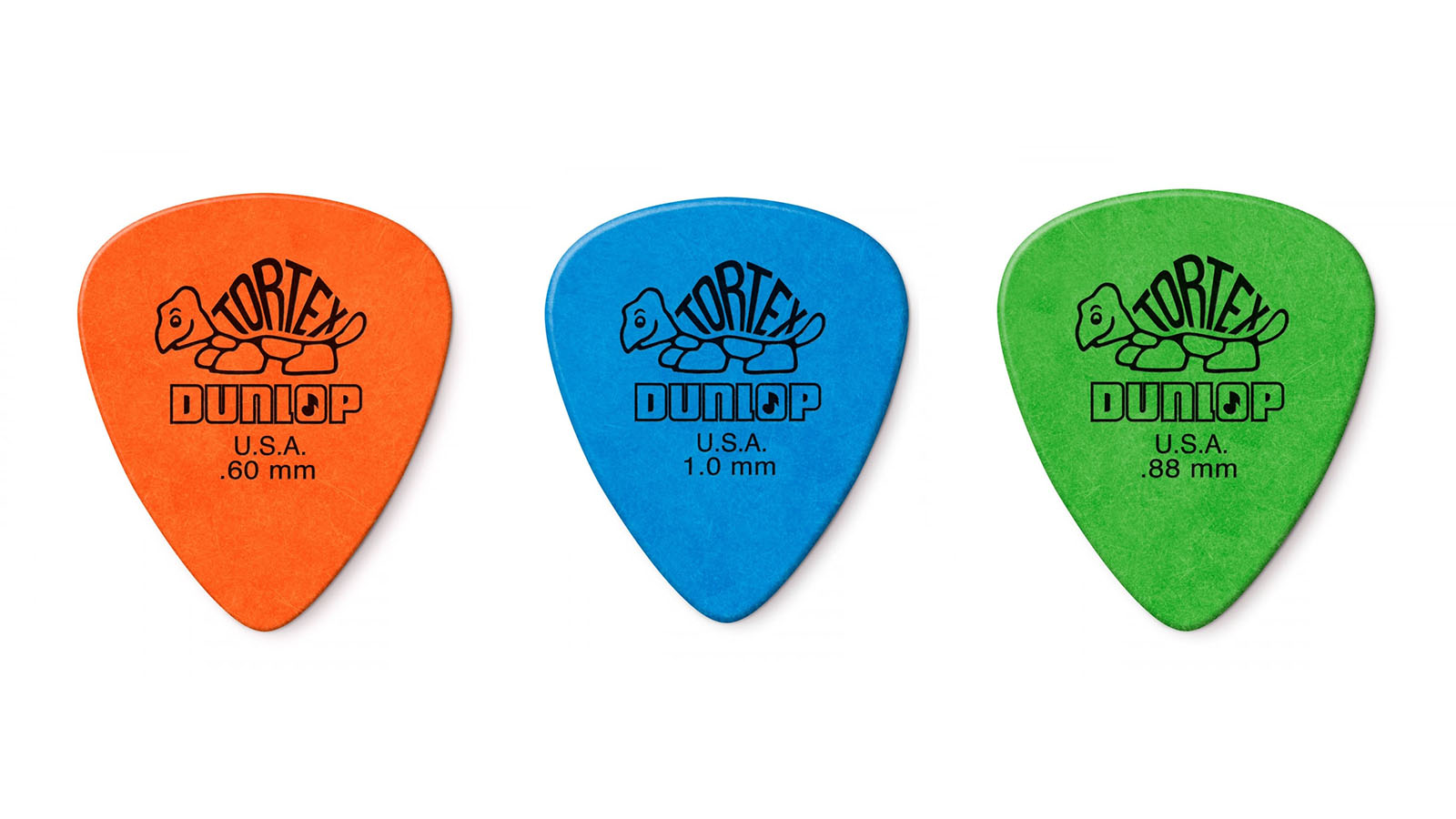
An acoustic guitar has a huge dynamic and tonal range for us to manipulate, and you shouldn’t overlook the building blocks – starting with what you’re using to attack it. The great news is that ten bucks will buy you a lot of plectrums, and will allow you to select the best type for your playing style/tonal goals.
Thinner picks are more flexible and will give against the strings, perfect for laying a lighter strumming texture. Thicker picks will increase the attack of your notes which are great for helping you to cut through when needed. Don’t forget the pick material, either. Go to your local guitar shop and p-p-pick up a selection of plectrums to experiment with.
- Best guitar picks: 12 recommended plectrums to upgrade your playing
13. Choose your chords wisely
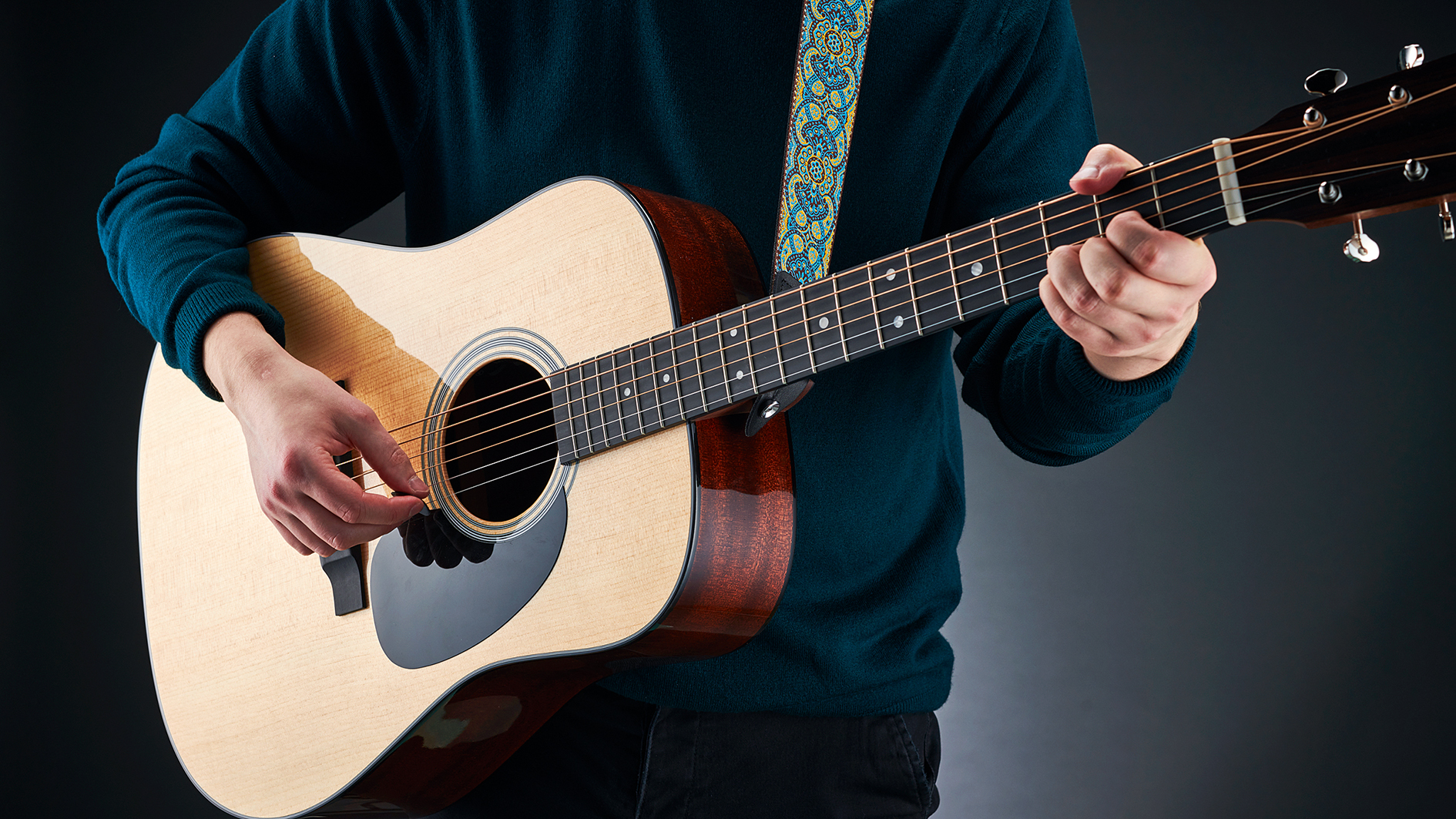
This isn’t only important in an acoustic/electric line-up where you’re potentially battling against an electric guitar and rhythm section, but also applies to open-mics and multi-acoustic ensembles too.
You want your guitar to be heard, so choose different chord inversions to what the other band members are playing. Open chords typically work well with acoustic parts, and will most likely help you to stay out of the way of your barre chord‑wielding bandmates.
14. Capo’d Crusader (from $6.49/£5)
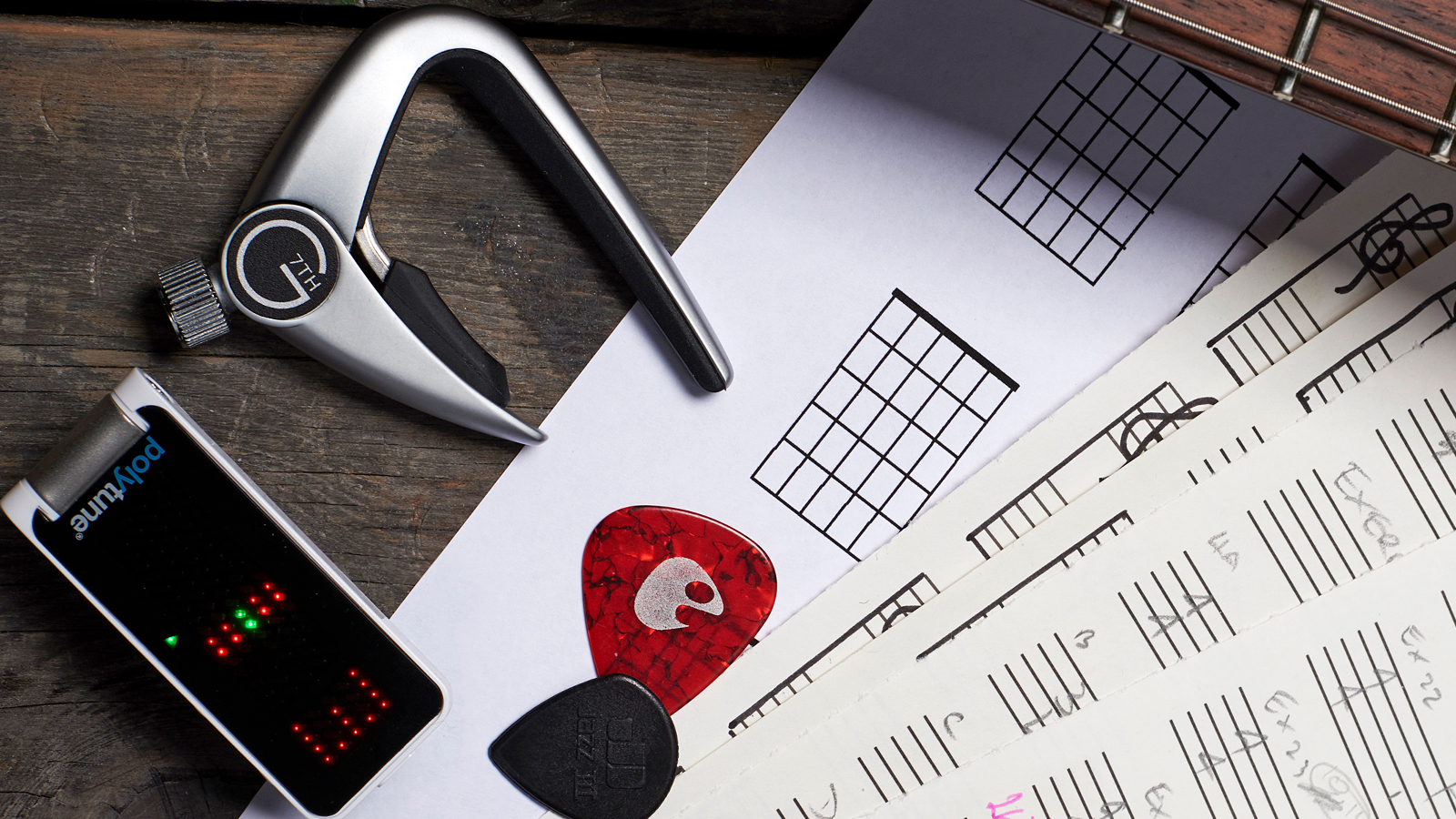
As we just mentioned, the lush, full sound of an acoustic guitar resonating with open chord shapes is a thing of beauty. But not all songs and keys lend themselves to this type of playing.
That’s where a guitar capo comes in. As basic as a pencil and a rubber band (please don’t!), or as flash as an aerospace-engineered precision vice, a decent capo will be your best friend when the key moves up the fretboard.
Tighten it down neatly and evenly across your fretboard (make sure you buy one for a curved ’board, not a flat classical fingerboard), then train your brain into transposing open chord shapes, and you’ll never have to choke your chords with a barre again.
- Best guitar capos: 10 top choice capos for acoustic and electric guitar
15. Set, don’t regret
With so much air moving around on stage, it’s important to pay attention to where you place your amp, monitors and mics in relation to your acoustic guitar in order to avoid feedback.
Where possible, avoid your amplified signal pumping directly back at you or your guitar and try to keep the on-stage volumes as low as possible to help eliminate the risk of squeal.
16. Don’t rule out effects
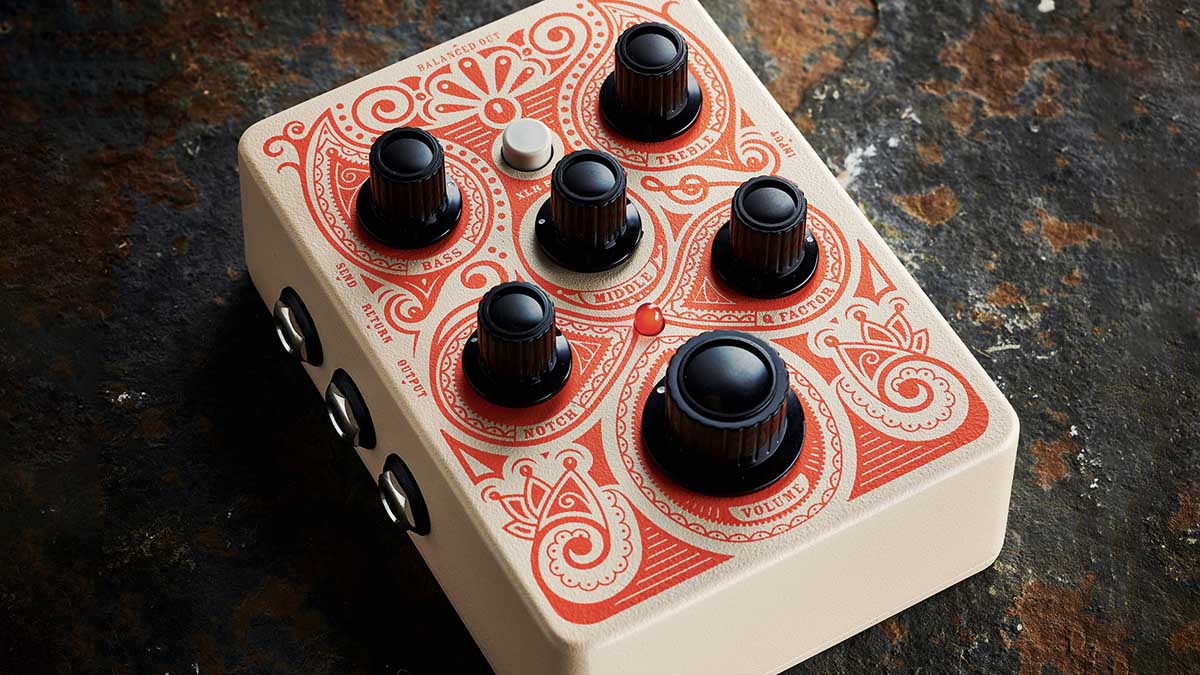
You may think of your acoustic guitar signal chain as an un-soiled haven of purity. But while utilitarian acoustic guitar pedals such as EQ, compression and volume might be your go-tos, there’s room to try some other stuff too.
A little reverb or even modulation goes a long way to adding dimension to the none-more-direct sound of an under-saddle piezo, and Nirvana’s triumphant MTV Unplugged performance even featured some overdrive on Kurt’s Martin D-18E. Give your pedals a try, and you might just discover a new angle to your acoustic sound!
- Best acoustic guitar pedals: essential pedals to transform your acoustic tone and boost creativity

Stuart has been working for guitar publications since 2008, beginning his career as Reviews Editor for Total Guitar before becoming Editor for six years. During this time, he and the team brought the magazine into the modern age with digital editions, a Youtube channel and the Apple chart-bothering Total Guitar Podcast. Stuart has also served as a freelance writer for Guitar World, Guitarist and MusicRadar reviewing hundreds of products spanning everything from acoustic guitars to valve amps, modelers and plugins. When not spouting his opinions on the best new gear, Stuart has been reminded on many occasions that the 'never meet your heroes' rule is entirely wrong, clocking-up interviews with the likes of Eddie Van Halen, Foo Fighters, Green Day and many, many more. If he's not playing the guitar, you'll likely find Stuart behind the kit playing Valerie to newlyweds.









